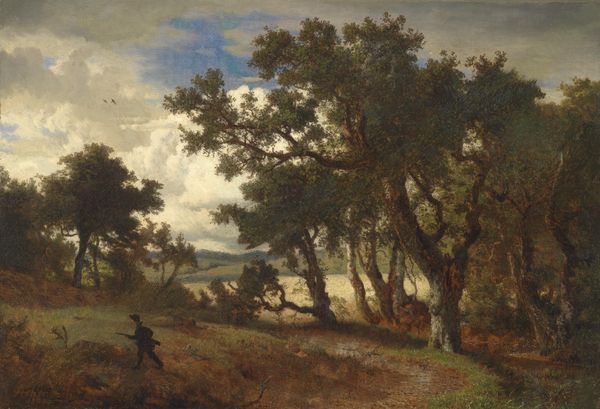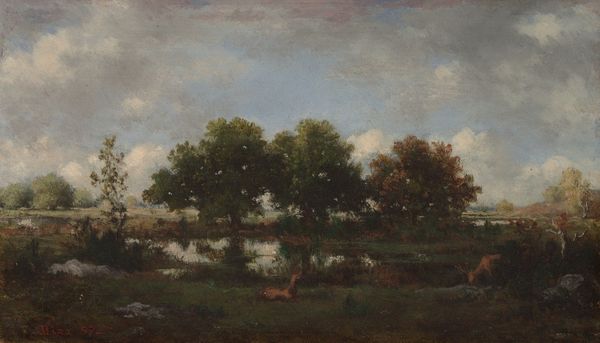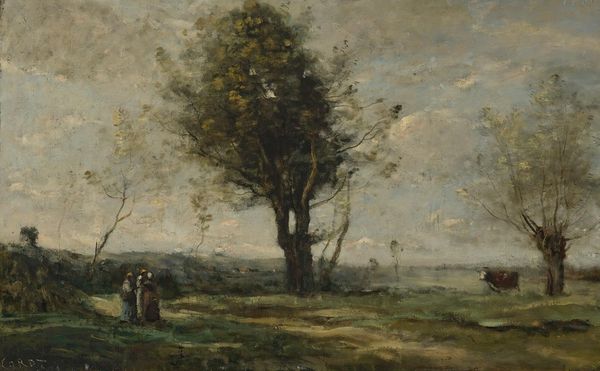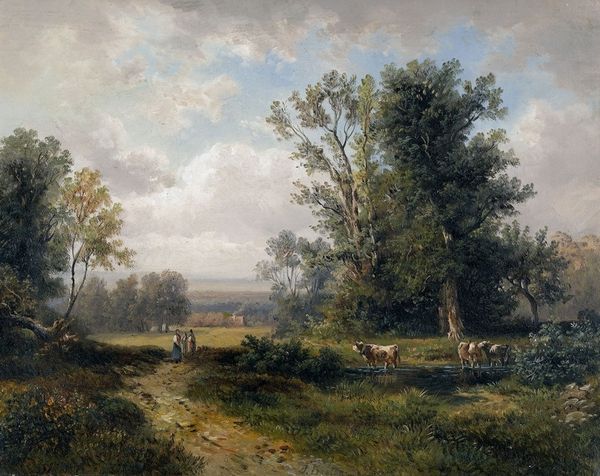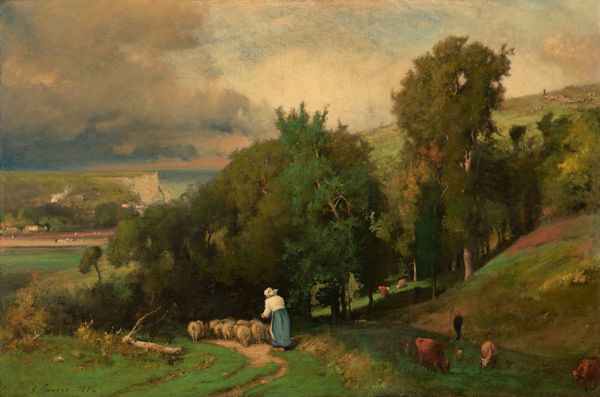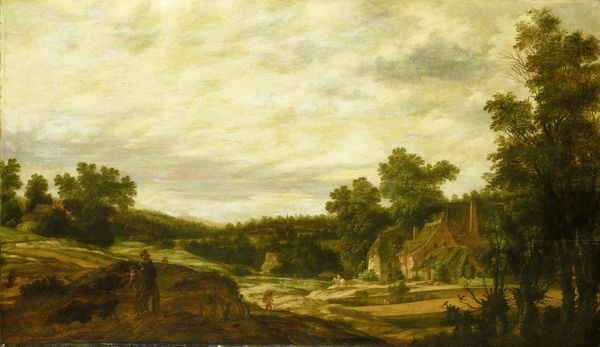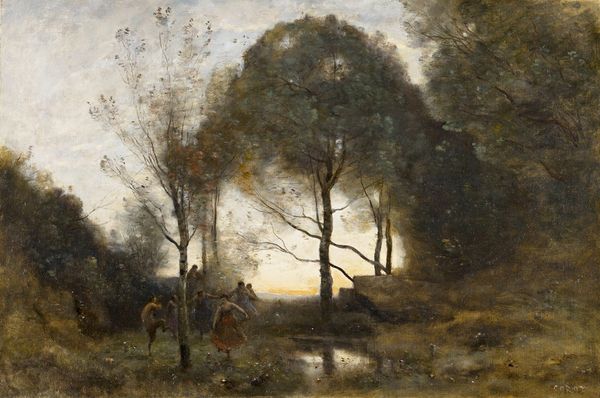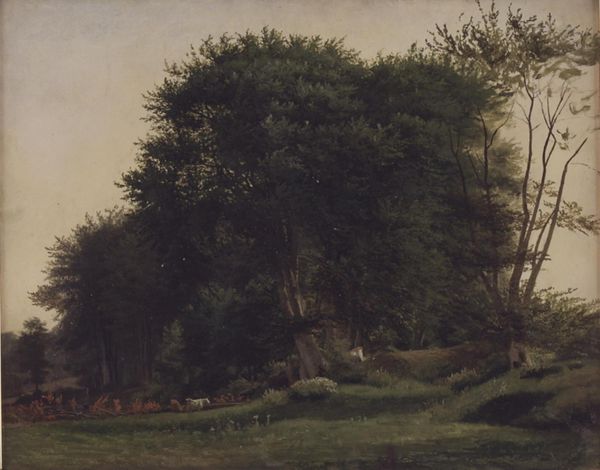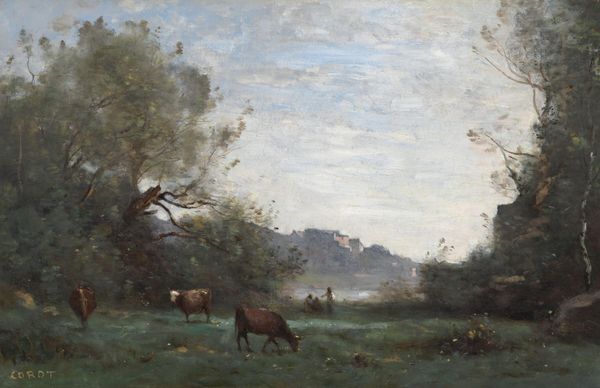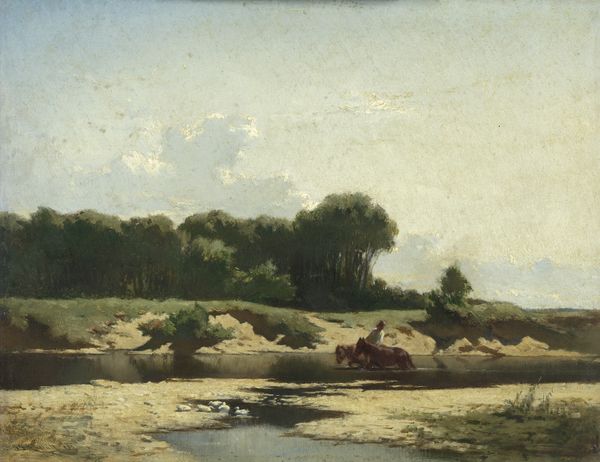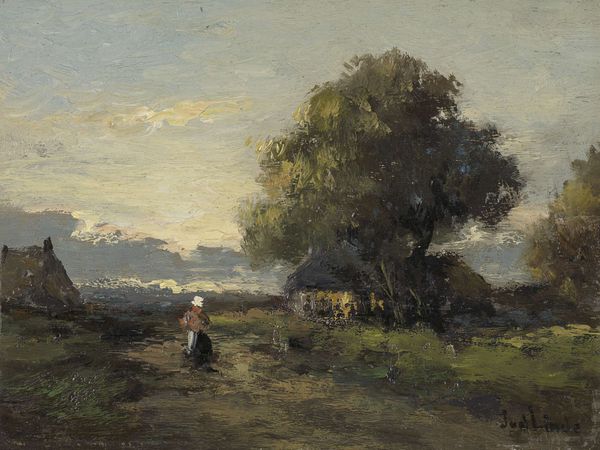
plein-air, oil-paint
#
impressionism
#
plein-air
#
oil-paint
#
landscape
#
oil painting
#
realism
Dimensions: height 38 cm, width 56.5 cm
Copyright: Rijks Museum: Open Domain
Curator: This is "Landscape," an oil painting created around 1872 by Camille Corot, now hanging in the Rijksmuseum. The muted tones create a serene and hazy atmosphere. Editor: Yes, there’s an ethereal quality. Note the subtle gradations of light and shadow; how the forms almost dissolve into the atmospheric perspective. It feels deeply personal and very dream-like to me. Curator: It certainly diverges from a more traditionally academic painting. The visible brushstrokes disrupt illusionism. The loose application of paint suggests Corot's investment in capturing the fleeting effects of light. His plein-air technique is evident, aligning him with the early Impressionists. Editor: Indeed. And it presents an interesting view into the pastoral social hierarchy of the time, doesn’t it? Consider how Corot positions the peasant figure at the bottom edge, her form quite small in scale. The landscape is the main subject, yet the relationship of the people and animals to it says so much. It really does present idealized agrarian life that doesn't reflect all the realities of the period. Curator: Observe also Corot's calculated arrangement of masses. The solidity of the trees on the left acts as an anchor, offset by the open, luminous space on the right. He’s playing with binaries--light/dark, solid/ephemeral to generate visual harmony. Editor: I find myself wondering about its cultural significance in late 19th-century France. Landscape painting served as a sort of visual preservation project amid rising industrialization. It also came to have significance in the rise of tourism. These idealized rural paintings drove traffic to locations and formed a market. What’s more real than a financial investment? Curator: Perhaps, but the true merit of Corot lies in how it mediates between observable reality and subjective sensation. Editor: A perfect point. I see now why its enduring allure rests as much on the historical undercurrents as it does on its compositional strategies. Curator: Indeed, the convergence of form and historical understanding offers an enriched perspective. Editor: An enriching experience!
Comments
rijksmuseum about 2 years ago
⋮
Corot belonged to the Barbizon School, which was so widely admired by Hague School artists. Around 1840 several artists settled in the village of Barbizon. They worked en plein air (in the open air) and lived among the peasants. Corot made this painting after a trip to Les Landes, a region south of Bordeaux. It was thus formerly entitled Souvenir de Les Landes.
Join the conversation
Join millions of artists and users on Artera today and experience the ultimate creative platform.
